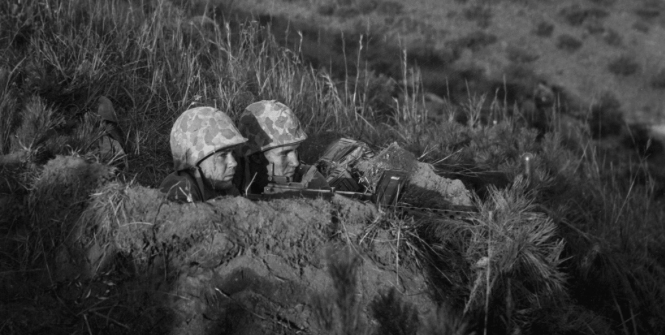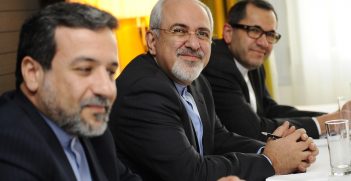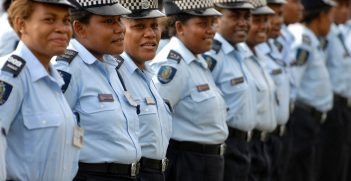Australia and Korea: 65 Years After the Korean War

June 24th marks the 65th anniversary of the beginning of the Korean War, which involved 17,000 Australians. 339 were killed and over 1,500 were wounded, and the ramifications of that conflict continue today.
On 7 July 1950, as a response to the invasion of the Republic of Korea (ROK) by North Korean forces, the United Nations Security Council – facilitated by a short-lived Soviet boycott – authorised an American-led force to repel the invasion, and called upon member states to contribute. Prime Minister Menzies was reluctant to commit to the Korean conflict. He was under pressure to assist the British in Malaya and the Middle East. He was also well aware of Australia’s military limitations. And this was a war fought in the name of the United Nations, an organisation of which he and his party were deeply distrustful.
However Menzies’ External Affairs Minister, Percy Spender, was keen to secure a ‘Pacific Pact’ with the United States to guarantee Australia’s security. In this objective Spender was following the policies of his Labor predecessor. The government in Washington had so far been unreceptive to his overtures. Now Spender was aware in June 1950 that a prompt commitment of an Australian contingent would improve the chances of such a pact. So was laid the foundations for Australia’s post World War II alliance with the United States. The full story of the ANZUS treaty is much larger than the Korea component. But it was nevertheless a vitally important element.
At the time of the Korean armistice agreement in 1953, Australia became one of the powers pledged to guarantee the integrity and independence of the Republic of Korea. This pledge is still operative. But, unlike in relation to the countries of Southeast Asia, Australia’s relationship with the ROK was not a high priority, with separate diplomatic representation only inaugurated in 1962. However, when significant economic complementarities developed in the 1980s – at a time when Korea was undergoing democratic transformation – Seoul attracted strong diplomatic attention, notably in the formation of APEC. It was only during the Rudd Labor government, however, that a serious attempt was made to institutionalise bilateral security coordination with the ROK. Thus the visit of President Lee Myung-bak of South Korea to Canberra in March 2009 led to a joint statement, which offered a highly detailed ‘Action Plan’ for security cooperation. Security cooperation has been further enhanced since that time.
Consistent with this alignment, the Australian response to the second North Korean (DPRK) nuclear test in 2009 was to favour the harshest sanctions possible against Pyongyang, including those envisaged in UN Security Council Resolution #1874. The decision by the US administration to deploy nuclear capable forces in exercises off the coast of South Korea following the sinking of a South Korean naval vessel, the Cheonan, by a DPRK torpedo in March 2010, was unequivocally welcomed by the Australian government, despite Beijing’s expressions of deep concern. Prime Minister Abbott has described the DPRK as ‘a rogue and outlaw state’.
Given the importance of the United States for Australia, Korea has continued to be seen through the ANZUS lens. It is most unlikely that even the still modest range of cooperation measures that have developed since 2009 would have been initiated between two middle powers, 7000 kilometres apart, in a region of the world dominated by three much larger powers absent the benign role of one of those powers. If the US-ROK-Australia relationship can be characterised as an isosceles triangle, then the ROK-Australia span bares no comparison with the spans originating in the USA with Washington at the apex.
While the United States dominated the Western Pacific, the ANZUS lens allowed policy makers in Australia a more-or-less clear view; moreover the policies it illuminated could be defended on the basis of a coherent conception of the national interest. The rise of China, however, has now caused significant debate regarding the ANZUS view. Is a similar re-evaluation in evidence in the Republic of Korea, and if so what might be the consequences?
From the perspective of the ROK, the most important configuration of powers is that embracing also the United States and China. Despite the long years of the Cold War, the persistence of the North Korean threat to the ROK, and the many similar political and economic interests shared by Tokyo and Seoul, Japan-ROK cooperation has never taken on a substantial character. Currently, Japan-ROK relations are little less than poisonous. Meanwhile, economic and investment linkages between Korea and China have seen China displace the US as the ROK’s major export market. While apprehension in Washington has increased as Chinese economic and military power has grown, ROK public opinion has not evinced the same level of apprehension.
The conditions that gave rise to the US-ROK alliance should be recalled. It was the fruit of a decision by the United States to maintain the government of the Republic of Korea, a decision that flowed ultimately from the occupation of the southern half of the peninsula in 1945. American policy excluded many domestic political forces from the subsequent creation of the republic. Even under the independent minded leadership of Park Chung-hee (the father of current President Park Geun-hye), the United States maintained a veto over many aspects of national policy. Only with the democratisation of the 1980s did Seoul begin to exercise some freedom of action. The existence of the DPRK however, and latterly the North Korean nuclear threat, have prolonged the alliance, though during the Roh Moo-hyun administration its limits became starkly apparent with the insistence that American forces were on the peninsula only to defend the republic and could have no wider regional mission. From the point of view of regional geopolitics, the continuance of the alliance beyond Korean re-unification cannot be necessarily assumed. For more than a millennium, Korea was under the effective suzerainty of China, and there is no neighbouring state of greater strategic importance to Beijing. Nevertheless, these trends have been countered, for the present, by the capricious behaviour of the DPRK, reflected in the confrontational stance of the Kim Jong-un leadership.
If relations between Washington and Beijing deteriorate further, there are some Korean scholars who would argue that the ROK’s future alignment is by no means clear. According to current opinion polls, ROK citizens believe that within 10 years China will become the most influential world power; they also believe that China’s economic influence over Korea is already pre-eminent. If continuing opinion shifts in the ROK lead to a major re-evaluation of the US-ROK alliance, it is a moot point whether security cooperation between Australia and the ROK will be seen in the current light.
James Cotton is Emeritus Professor, University of New South Wales, ADFA, Canberra. This article is can be republished with attribution under a Creative Commons Licence.





